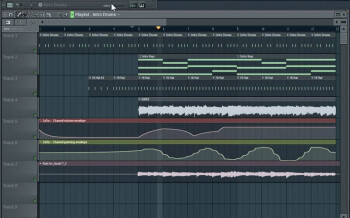Today we'll look at the parameters better suited for artistic automation.
Automatic for the people
When it comes to automation during mixdown, historically the tool most commonly used is the volume fader. And despite all the possibilities that modern DAWs provide, the good ol’ fader remains the go-to tool for any experienced engineer. It’s sheer simplicity, combined with its direct impact on sound make it an incredibly effective tool to highlight or play down this or that element at any given moment in no time. Furthermore, if you were smart enough to send the different tracks to specific buses (drums, rhythm guitars, etc), the faders of the latter will allow you to easily manage how the verses, chorus, breaks and solos of the song you’re mixing intertwine with each other. But be careful not to do any glaring moves because listeners don’t really like to hear the audio engineer doing his thing backstage.
The pan control is another control that is prone to being automated. As simple to use as the volume fader, it allows you to quickly play with the width of your sonic film. However, you need to be even more subtle with it because quick and sudden changes can make your listeners dizzy, especially with headphones. So, take it easy.
EQ automation is also a good option, from an artistic point of view. It’s a more subtle alternative to using the volume fader to highlight or play down a single instrument at specific moments, since you often need to focus solely on a single frequency band and modify just slightly its gain. Besides, there’s nothing better to change the color of a soundscape than automating the EQ on a track group.
And don’t hesitate using the mute button on some of your tracks – a simple and effective means to work on the mise en scène, scenery and direction of your sonic film.
Another way to make your song more lively is to automate the track sends for the reverb and/or delay, as well as the parameters of these effects. You can thus “move” the elements of the mix in the soundfield, but also change the entire scenery or the virtual location where it’s all taking place.
Finally, the occasional automation of the bypass or special effects like a reverb, delay, filter, modulation, etc. might be a good option to bring the attention of the listener to a specific element at a given moment. But be cautious, you should use this trick very sparingly so that it really achieves the emotional effect you are looking for.
Voilà, I think you have more than enough to entertain yourself with that. The time has come to automate your vision of the mix. Next week we’ll see how to actually make the automations.

